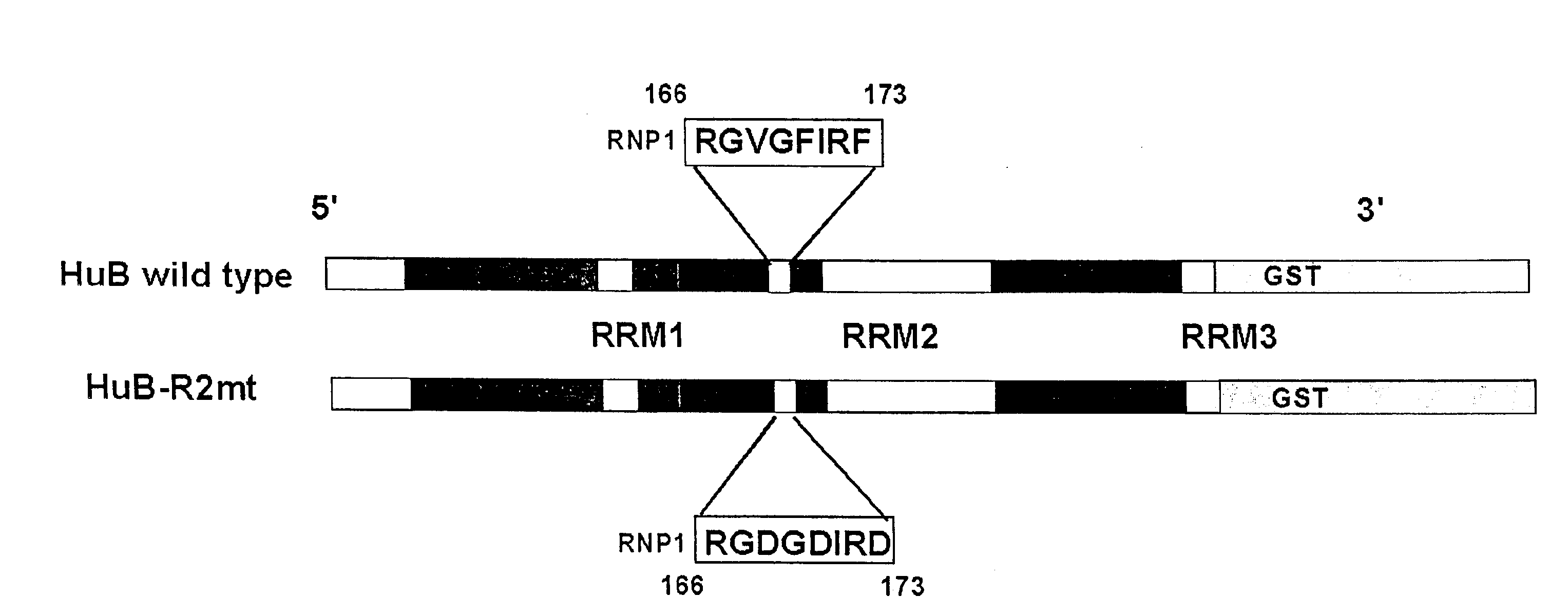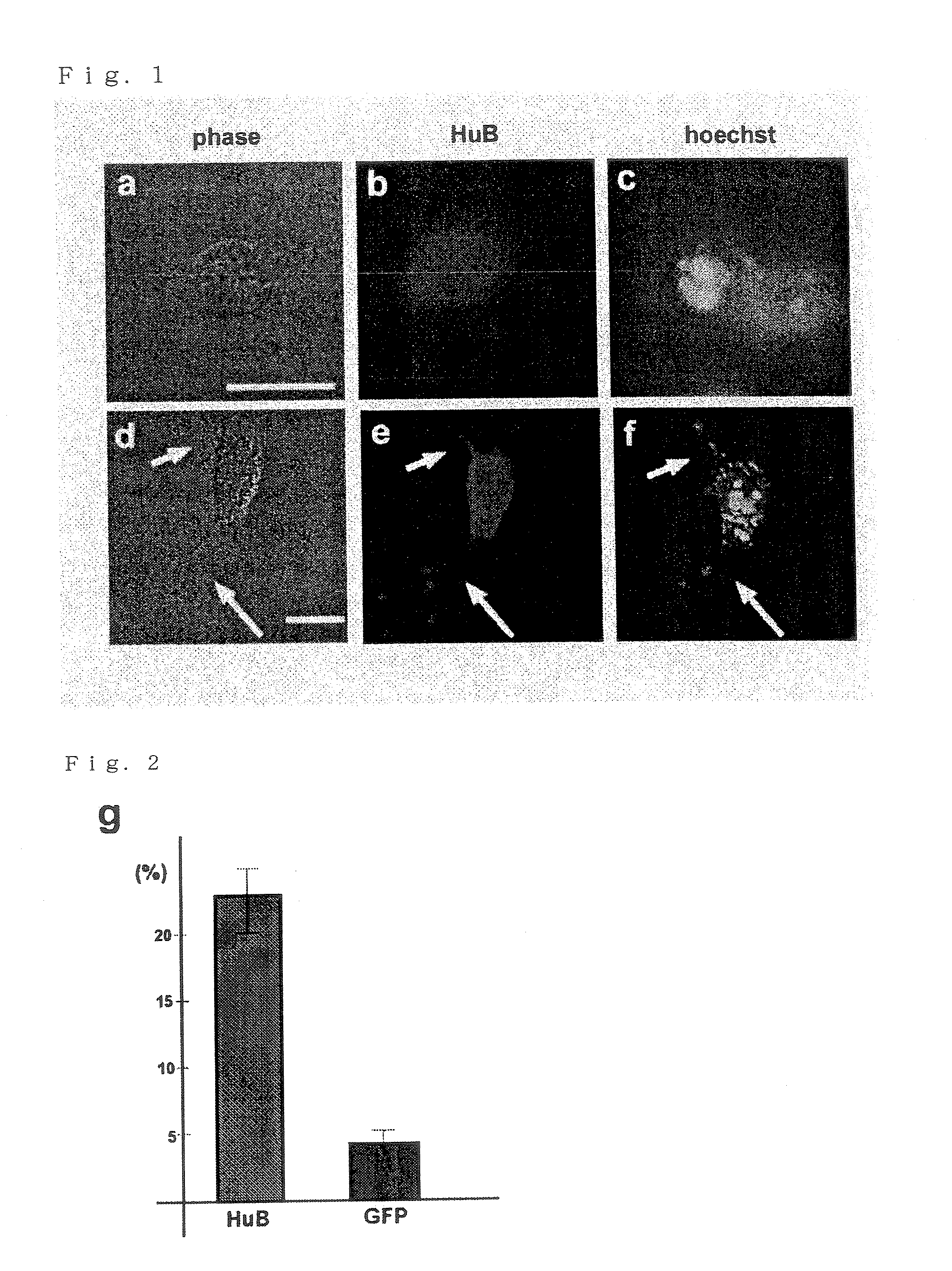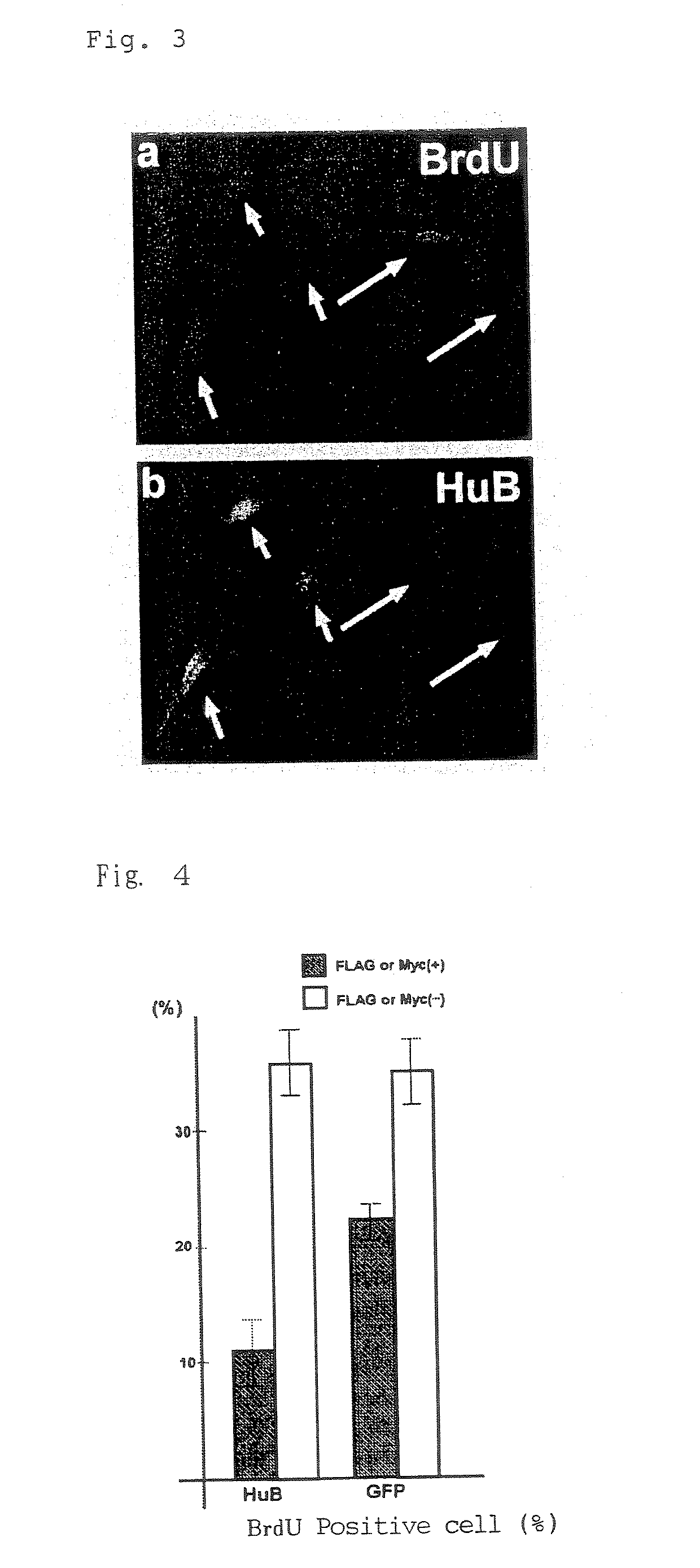Therapeutic agent for tumor of neural origin
- Summary
- Abstract
- Description
- Claims
- Application Information
AI Technical Summary
Benefits of technology
Problems solved by technology
Method used
Image
Examples
example 1
[0024] A plasmid described by Akamatsu et al. (PNAS 1999) was inserted in a vector pCXN2 and then transferred to SH-SY5Y cells through use of Lipofectamine Plus (BRL), to thereby forcedly induce expression of a modified gene obtained by adding a FLAG-tag to a mouse-derived, HuB-protein-encoding gene on its N-terminal side. The resultant cells were cultured in a 12-well dish containing cover glasses coated with Poly-L-lysine. Forty-eight hours after the transfer, the resultant HuB-incorporated cells were immunostained with an antibody for the FLAG-tag. Among the HuB-incorporated cells, a large number of cells with pyknosis were identified through Hoechst staining (see FIGS. 1a through 1c). In some of the HuB-incorporated cells with extended neurites—thus assuming the shape of a neuron—Hoechst staining also revealed the existence of cells with pyknosis (see FIGS. 1d through 1f).
[0025] The TUNEL positive rate of these incorporated cells was determined through the TUNEL method. The TUN...
example 2
[0026] SH-SY5Y cells to which HuB had been incorporated were prepared. Starting from 36 hours after the gene transfer, stage-S cells underwent a labeling process with bromodeoxyuridine (BrdU) that had been added to the medium for 12 hours. Forty-eight hours after the gene transfer, the labeled cells were immunostained by use of anti-BrdU antibody and anti-FLAG (or anti-Myc) antibody (FIGS. 3a and 3b). The BrdU positive rate of the incorporated cells was calculated (FIG. 4). As a result, the HuB-incorporated SH-SY5Y cells were found to have incorporated about 50% less BrdU than the control cells. That is, overexpression of HuB was found to have halted multiplication of SH-SY5Y cells.
example 3
[0027] Bcl-2 is a differentiation marker which has been known to rise in level as differentiation proceeds. Twenty-four hours after the transfer of HuB, the resultant HuB-incorporated SH-SY5Y cells were immunostained with an antibody for Bcl-2. The results are shown in FIGS. 5a and 5b. The HuB-incorporated cells (FLAG-positive cells) were found to exhibit reduced Bcl-2 expression (represented by white arrows). The broken line represents the periphery of an individual cell. Separately, SH-SY5Y cells in which HuB, HuC, or a control (GFP-Myc) had been incorporated were subjected to immunoblotting through use of an antibody for p27 which has been reported to be bound to Hu protein, or Bcl-2 (FIG. 6). Through quantification performed on NIH-images, the HuC-incorporated cells were found to contain almost the same amount of p27 and Bcl-2, whereas the HuB-incorporated cells were found to contain about 40% more p27 and 35% less Bcl-2 than the control cells. In order to adjust quantification,...
PUM
| Property | Measurement | Unit |
|---|---|---|
| Fraction | aaaaa | aaaaa |
| Fraction | aaaaa | aaaaa |
| Fraction | aaaaa | aaaaa |
Abstract
Description
Claims
Application Information
 Login to view more
Login to view more - R&D Engineer
- R&D Manager
- IP Professional
- Industry Leading Data Capabilities
- Powerful AI technology
- Patent DNA Extraction
Browse by: Latest US Patents, China's latest patents, Technical Efficacy Thesaurus, Application Domain, Technology Topic.
© 2024 PatSnap. All rights reserved.Legal|Privacy policy|Modern Slavery Act Transparency Statement|Sitemap



